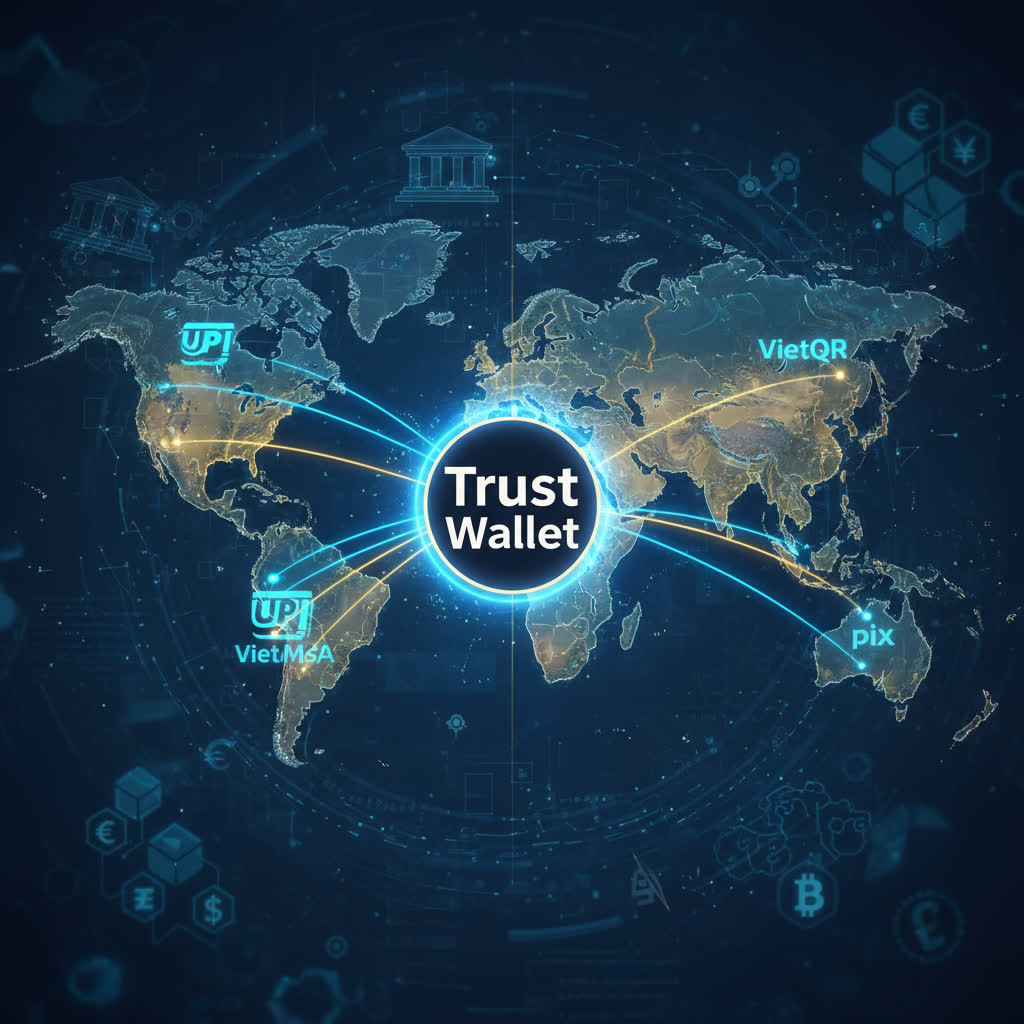Crypto Security Essentials: Protecting Your Digital Assets in 2025
As the cryptocurrency market continues to expand rapidly in 2025, securing your digital assets has become a top priority for investors and users alike. With cyber threats growing increasingly sophisticated and the value of crypto holdings rising, understanding and implementing robust security measures is essential to safeguard your investments. This comprehensive guide covers the fundamentals of crypto security, practical tips, and best practices to help you protect your cryptocurrencies effectively.

Why Crypto Security Matters More Than Ever in 2025
Cryptocurrencies are decentralized digital assets controlled by cryptographic keys. Unlike traditional bank accounts, there is no central authority or customer support to recover lost or stolen funds. This means that if your private keys are compromised, your crypto assets can be irretrievably lost. The growing number of crypto holders worldwide-now estimated at over 560 million-makes the sector a lucrative target for hackers, scammers, and malicious actors.
In 2024 alone, hackers drained approximately $1.48 billion from crypto projects, with decentralized finance (DeFi) platforms being the primary targets. As the ecosystem grows, so does the complexity and scale of cyber threats, making it imperative for users to adopt comprehensive security strategies.
Key Components of Crypto Security in 2025
1. Choose the Right Wallet: Hot vs. Cold Storage
Hot Wallets are connected to the internet and include mobile wallets (e.g., Trust Wallet, MetaMask), desktop wallets, and web wallets. They offer convenience for frequent transactions but are more vulnerable to hacking, phishing, and malware attacks.
Cold Wallets store private keys offline, such as hardware wallets (Ledger Nano X, Trezor Model T) and paper wallets. They provide the highest level of security by isolating keys from online threats, making them ideal for long-term storage of large holdings.
Best Practice: Store the bulk of your crypto assets in cold wallets and keep only small amounts in hot wallets for daily use.
2. Secure Your Private Keys and Seed Phrases
Your private keys and seed phrases are the master keys to your crypto holdings. Protect them by:
-
Never sharing them with anyone or entering them on untrusted websites.
-
Storing them offline in secure, physical locations such as fireproof safes.
-
Avoiding digital storage like cloud services or photos on your phone, which can be hacked.
-
Creating multiple backups stored in geographically separate, secure places.
3. Use Strong Passwords and Two-Factor Authentication (2FA)
Weak passwords are a common vulnerability. Always use complex, unique passwords for your wallets and exchange accounts, and consider using password managers to generate and store them securely.
Enable two-factor authentication (2FA) on all crypto-related accounts. Prefer authenticator apps (Google Authenticator, Authy) or hardware security keys (YubiKey) over SMS-based 2FA, which is susceptible to SIM swapping attacks.
4. Beware of Phishing and Social Engineering Attacks
Phishing scams impersonate legitimate services to steal credentials or private keys. Protect yourself by:
-
Always verifying URLs before entering sensitive information.
-
Bookmarking trusted crypto websites to avoid typosquatting.
-
Never clicking on unsolicited links or downloading attachments from unknown sources.
-
Being cautious when interacting with unknown smart contracts or dApps.
5. Regularly Update Wallet Software and Device Firmware
Developers release updates to patch security vulnerabilities and improve wallet functionality. Keeping your wallet apps and hardware wallet firmware up to date is critical to protect against emerging threats.
6. Use Hardware Wallets for Maximum Security
Hardware wallets keep your private keys offline and require physical interaction to authorize transactions. Devices like Ledger Nano X and Trezor Model T are widely trusted for their secure elements and encryption.
Tip: Always purchase hardware wallets directly from manufacturers or authorized resellers to avoid tampering risks.
7. Secure Your Network and Devices
-
Use secure, private internet connections rather than public Wi-Fi when accessing wallets or exchanges.
-
Employ firewalls, antivirus software, and VPNs to protect your devices.
-
Implement network-level protections such as intrusion detection systems and regular security patches.
8. Backup Your Wallet and Data Regularly
Backing up your wallet ensures you can recover your funds if your device is lost, stolen, or damaged. Store backups securely offline and test recovery procedures periodically.
9. Consider Multi-Signature Wallets
Multi-signature wallets require multiple private keys to authorize a transaction, reducing the risk of theft if one key is compromised. This is especially useful for organizational funds or high-net-worth individuals.
Additional Security Tips for 2025
-
Segment your crypto holdings: use different wallets for different purposes (e.g., one for trading, one for savings).
-
Monitor wallet activity regularly for unauthorized transactions.
-
Avoid connecting your main wallet to unverified dApps or websites.
-
Educate yourself continuously about new threats and security technologies.
-
Use reputable, regulated exchanges and services with strong security measures.
The Legal and Regulatory Landscape Impacting Crypto Security
Regulatory clarity is improving worldwide, with many jurisdictions introducing frameworks to protect investors and enforce security standards. However, regulations vary widely, and users must remain vigilant and comply with local laws to avoid legal risks.
The Future of Crypto Security: Trends to Watch
-
Biometric Authentication: Increasing adoption of fingerprint and facial recognition for wallet access.
-
Social Recovery Mechanisms: Trusted contacts can assist in wallet recovery without exposing private keys.
-
Post-Quantum Cryptography: Preparing wallets to resist future quantum computing attacks.
-
AI-Powered Security: Real-time threat detection and response using artificial intelligence.
-
Decentralized Identity Solutions: Enhancing privacy and security through blockchain-based identity verification.
Conclusion
Protecting your cryptocurrency in 2025 requires a multi-layered approach combining the right technology, disciplined user practices, and continuous education. By choosing secure wallets, safeguarding private keys, using strong authentication, and staying alert to evolving threats, you can significantly reduce the risk of loss and theft.
As the crypto ecosystem grows and matures, adopting these crypto security essentials will empower you to safely participate in the digital economy and confidently manage your digital assets.
References:
-
Crypto Security in 2025 – How to Protect Your Crypto, Efani
-
2025 Cryptocurrency Storage Guide for Beginners, RockWallet
-
Security 101: How to Safely Store Your Crypto in 2025, Reddit
-
How to Secure Your Cryptocurrency in 2025: A Complete Guide, NFTevening
-
Essential Crypto Security Guide for 2025 Beginners, Smart Liquidity
-
Guide to Cryptocurrency Security, Arkose Labs
-
Crypto and Cybersecurity: How to Keep Your Cryptocurrency Safe in 2025, Hackread
Ready to start your cryptocurrency journey?
If you’re interested in exploring the world of crypto trading, here are some trusted platforms where you can create an account:
- Binance – The world’s largest cryptocurrency exchange by volume.
- Bybit – A top choice for derivatives trading with an intuitive interface.
- OKX – A comprehensive platform featuring spot, futures, DeFi, and a powerful Web3 wallet.
- KuCoin – Known for its vast selection of altcoins and user-friendly mobile app.
These platforms offer innovative features and a secure environment for trading and learning about cryptocurrencies. Join today and start exploring the opportunities in this exciting space!

Join our crypto community for news, discussions, and market updates: CryptoBCC on Telegram.

Disclaimer: Always do your own research (DYOR) and ensure you understand the risks before making any financial decisions.




